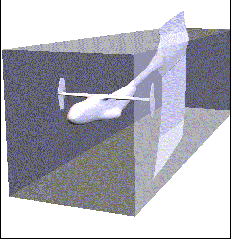Introduction
Today, modern aircraft design technology and flow simulation capabilities on high speed computers allow to design more complex and advanced aircraft configurations. Such aircrafts may include adaptive components. Verification of such simulations and testing of advanced designs calls for sophisticated wind tunnel testing. These may include dynamic testing for aeroelastic effects or extreme flight maneuvers. These tests pose high demands on the data processing of wind tunnel data acquisition due to much increased amounts of data than those used before in traditional test.
This makes wind tunnel tests complex and even more expensive. In order to optimize wind tunnel usage, it is necessary to be able to analyze the data during the run-time of the experiment and make decisions about changes in the program of the testing campaign as early as possible. Early detection of errors and optimized testing campaign programs reduce the amount of data needed and thus save wind tunnel time and cost.
Already for traditional wind tunnel tests, the DLR uses an advanced data acquisition and wind tunnel control system DeAs1,2. One of the features of this system is an open interface which allows for hardware and software extension. This mechanism may be used as a communication mechanism to separate systems such as the data analysis system described in this paper. While the experiment is controlled by the well-established DeAs system, which also handles the data acquisition from a variety of measurement devices, all data processing and feature extraction may be done in parallel on a different system, as well as a different computer. This avoids any interference from the post-processing on the experimental set-up which would be undesired. The data post-processing and feature extraction may be seen as a decision support system which opens the chance for wind tunnel crews and aerodynamic experts to immediately analyze the data and initiate changes to the experimental set-up or experimental program.

Figure 1: F9-Model in the wind tunnel test section. CCSBs are fitted to the wings to correct for effects of model scale and clipped wings.
Changes of this nature still require the human-in-the-loop. Due to the communication interface between the two software systems, humans involved in conducting the experiment need not to be present at the wind tunnel since the post-processing is linked over a network. As there is no locking mechanism needed, several engineers may work on the data independently and simultaneously. These properties of the system were first required for the experiments on the DLR-F9-model. The experiments conducted on the DLR-F9 transport aircraft model aimed at investigations in the fuselage area involve a number of new technologies beyond the traditional well-known testing methods 3. Such new approaches include an adaptive test section of the Transsonic Wind Tunnel at the DLR in Göttingen, an extremely large model with a high blockage ratio, and the use of Circulation Control Splitter Blades (CCSB) 4 for the compensating for the cut-off wing tips.




